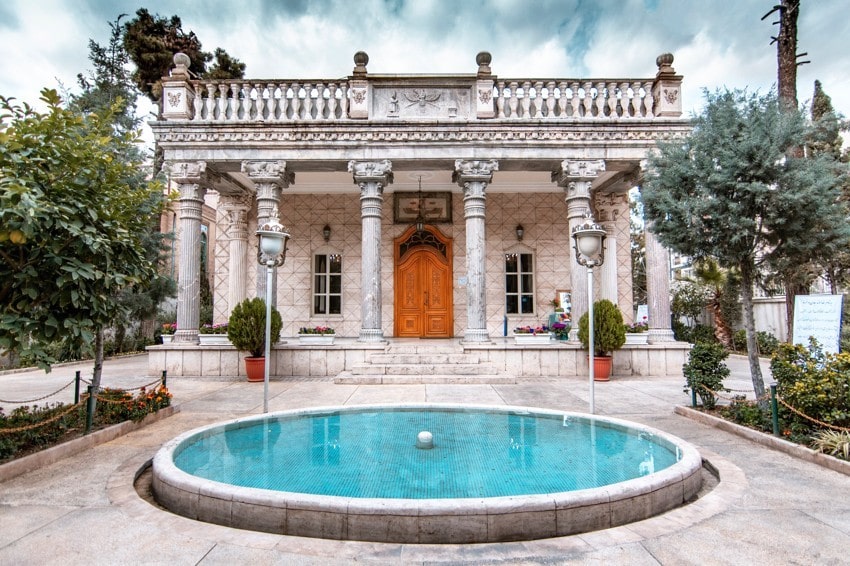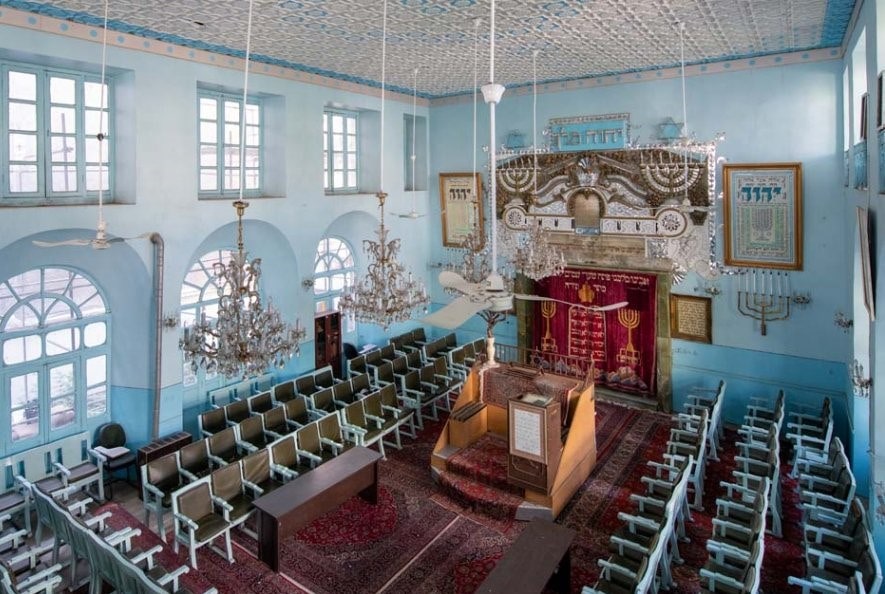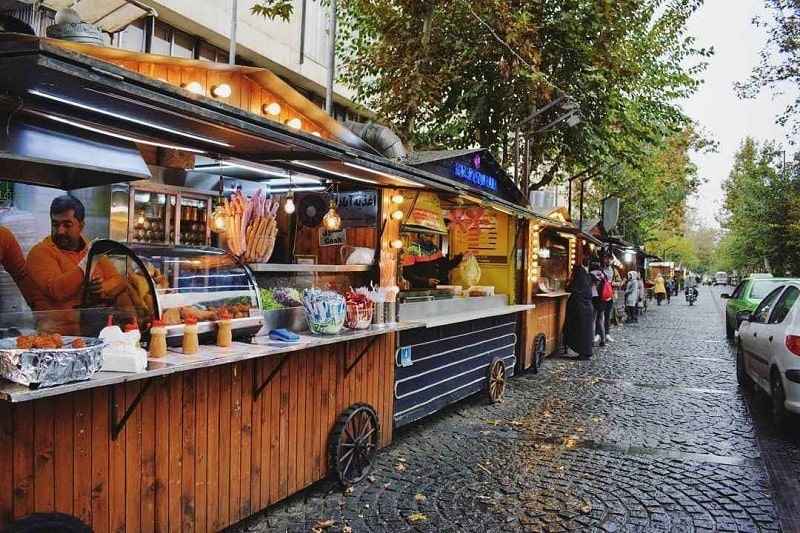Introduction to Si-e Tir Street
Walking on Si-e Tir Street in Tehran is crossing the corridor of time. A street in the heart of history, sheltered by religions, with a view of culture, art, and education that ends in a pleasant experience of walking and eating.
The Si-e Tir is a unique spot in the capital that contains a church, a mosque, a synagogue, and a fire temple. Religious peace prevails on the road and smiles at its passers-by.
The synagogue with the blue door, the Saint Peters Church, the Arch Bishop Ardak Manoukian Museum, the Adrian Fire Temple, and the mosque of Hazrat-e-Ibrahim together shape the collective life of the place. Charm is not just about religions. The history is rippling through the cobbled street, from the National Museum and Ancient Iran Museum to the House of Qavam al-Saltanah and the first modern hospital in Tehran, Sina, and the Museum of Science and Technology.

History of Si-e Tir Street
Contemporary historians estimate the street to be 150 years old. It was built during the constitutional period and was known as Qavam al-Saltanah Street from the very beginning. The reason is the location of the house of Qavam al-Saltanah, the prime minister during the imperial period, in the zone, which includes a strange story of its own, and it still stands, despite its long history.
It was destined to be at the first home of the prime minister of the Qajar and Pahlavi kings and then the Embassy of Egypt. The house was converted into the Glassware and Ceramic Museum after being redesigned by Hans Hollein, and today, stained glass with old designs is selling in the museum.
However, with the uprising of people in support of the National Movement of Iran on 21 July 1952 A.D (Si-e Tir 1331 S.H), the name of Qavam al-Saltanah disappeared. Especially when Mossadegh, the then Prime Minister, declared the day a public holiday a year later, the date remained in the minds until the name of the street officially changed to Si-e Tir.

Historic sites on Si-e Tir Street
The beginning of the road starts with the National Museum of Iran, which was built by Andre Godard, the architect of the Paris Municipality, in 1937 A.D by Reza Shah. The construction of the building has inspired by the Taq Kasra, another ancient monument of Persia. The arch is a quarter of the Taq Kasra and has built in the classical style.
The Haim Synagogue is the first urban Jewish place of worship in the history of Iran. Before that, Jews were only allowed to build synagogues in their residents, but after the constitutional changes, the ban has removed, and they could have it outside their area.
Sometime after the construction of Si-e Tir Street, the Saint Peters Church was built on the road by Protestant missionaries based in Tehran, after which Christians settled near the church and in the surrounding alleys. Christians and Armenians also have a museum on the street in addition to the Saint Peters Church to introduce Christian ethnic groups in Iran. The museum displays clothing, Bible books, silverware and handicrafts, introductions to Iranian churches, etc.
The Zoroastrian shrine building was built 90 years ago during the first Pahlavi period and has inspired by Persepolis (Takht-e Jamshid) and ancient Iran. Adjacent to the building is Firooz Bahram High School, the most famous Zoroastrian educational centre.
The Sina Hospital, the first modern hospital in Iran, was built at the beginning of Si-e Tir Street and is still one of the best-equipped hospitals in Tehran. It is interesting to know that in the years after the start of the hospital, Si-e Tir Street was called Marizkhaneh Street.

The atmosphere of Si-e Tir Street
Writing from Si-e Tir Street and everything in it is not an easy task. All the seemingly ordinary buildings on it have a history of several years. The next time you walk down the road, take a little more patience to let the 100-year-old tiles on the buildings speak to you. Si-e Tir Street holds another surprise, which is one of the few streets in Tehran you can see the Alborz Mountains from its beginning if the air pollution allows.
Si-e Tir Street in Tehran, with its stunning cobblestones, tall trees, and small tables and chairs on the sidewalk, has become a romantic and pleasant atmosphere that attracts many people from all over the city.

The delicious food on Si-e Tir Street
Si-e Tir Street is well-known for having dozens of colourful vans and wooden cafes serving yummy and fragrant food. There is a noisy and lovely atmosphere, through which the smell of various foods will make you so hungry, and it is unlikely that you will not stop there!
The Street Food is an attractive and delicious atmosphere on Si-e Tir Street, one of the historic roads of the capital. It does not matter what taste and food you are looking for; you can find your favourite food and taste different flavours on the street.
The Si-e Tir Street includes a program for you from breakfast to dinner. There are many restaurants where you can have breakfast in the Gol-e Rezaieh Cafe, the hangout of Sadegh Hedayat and Forough Farrokhzad, and when you enter it, it is as if you have stepped into the 60s and 70s A.D.
For lunch, Reza Loghmeh’s shop is one of the best options. At night, a caravan of mobile cafes and restaurants has created a pleasant path where you can find food from Abadan Falafel to the Mirza Ghasemi from Gilan. If you want more modern food, there are the hamburger and pizza stand on the other side. You can also enjoy your double espresso under the lights of the National Museum of Iran or the Parade Square (Meydan-e Mashq).

